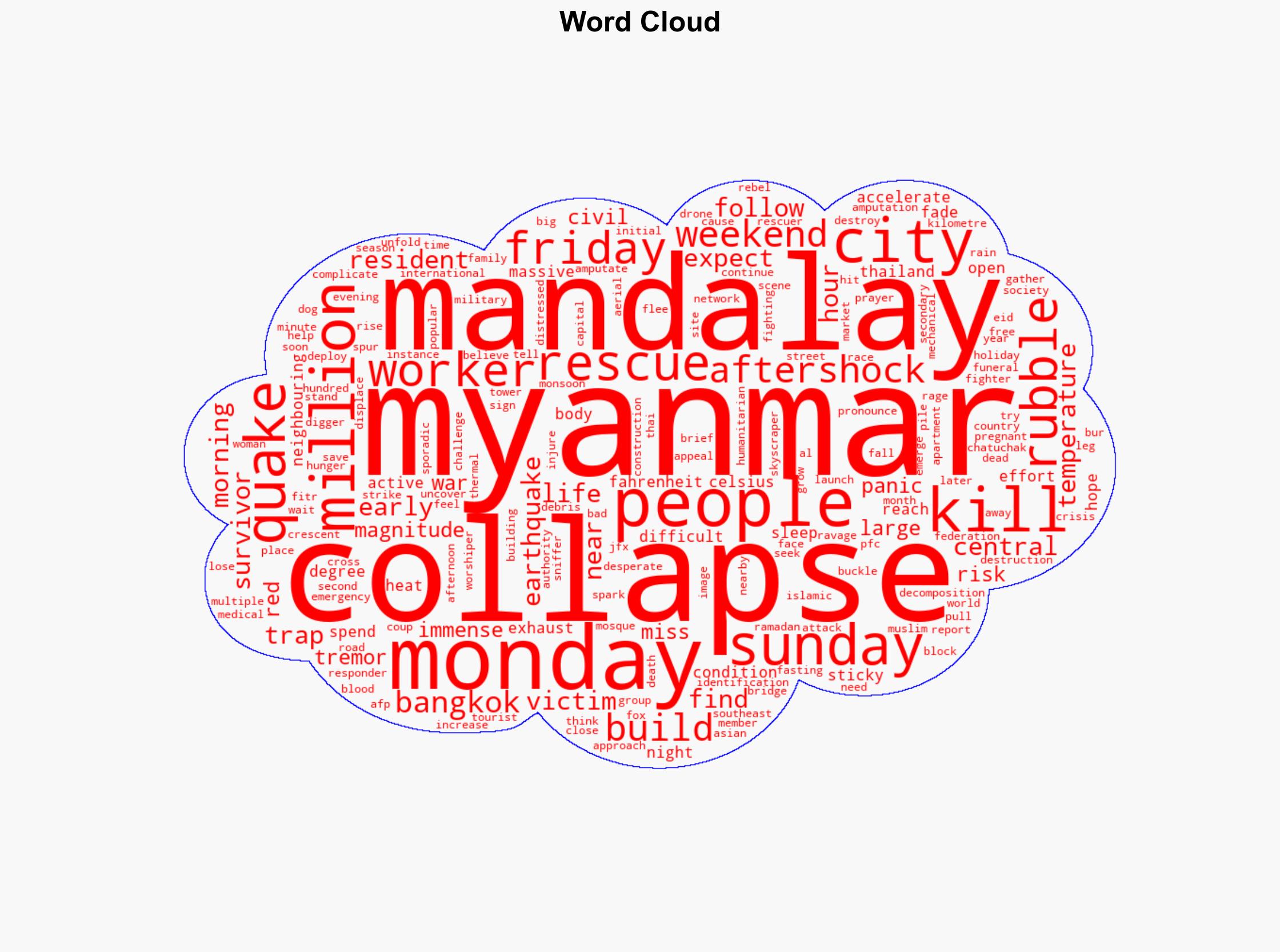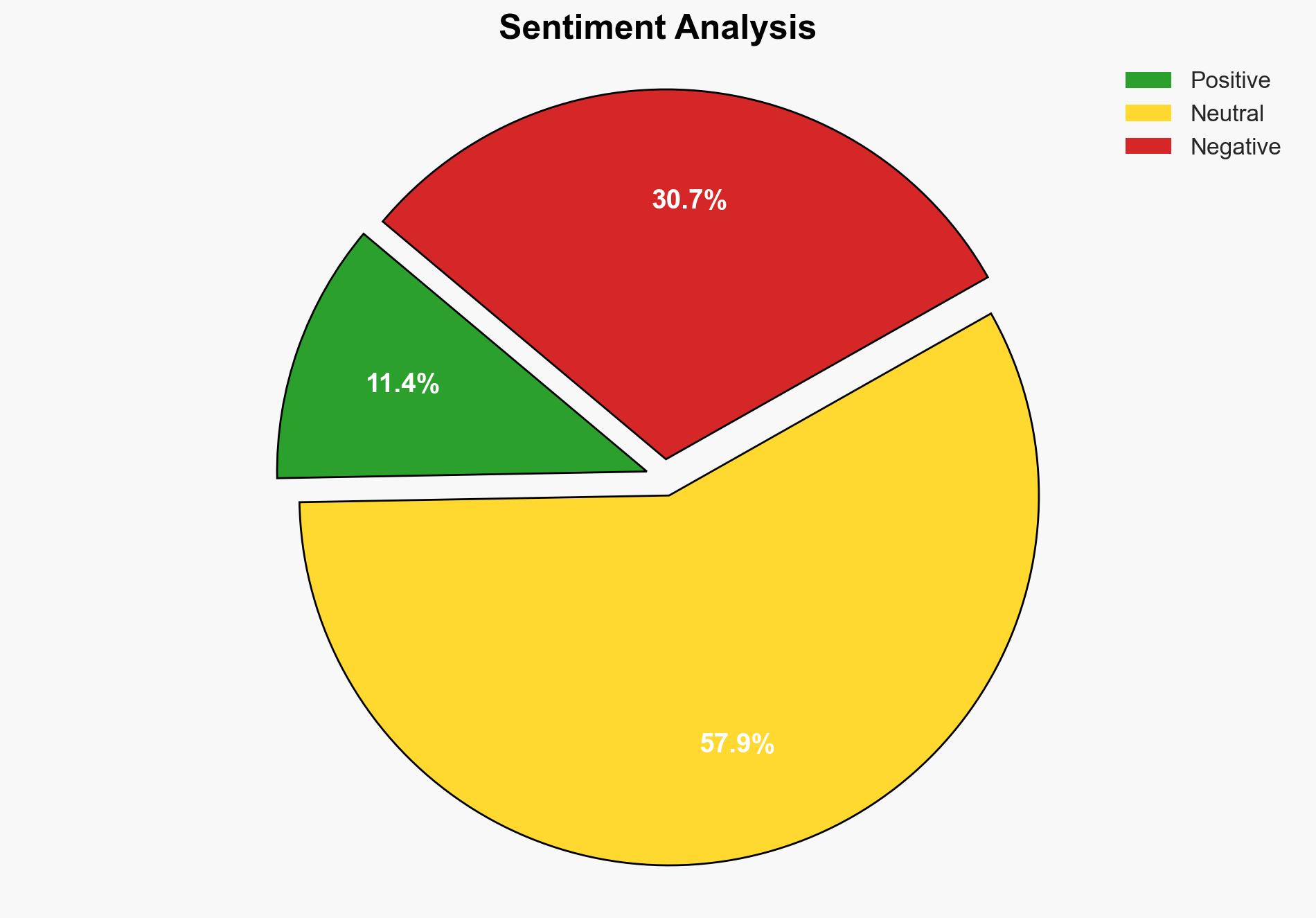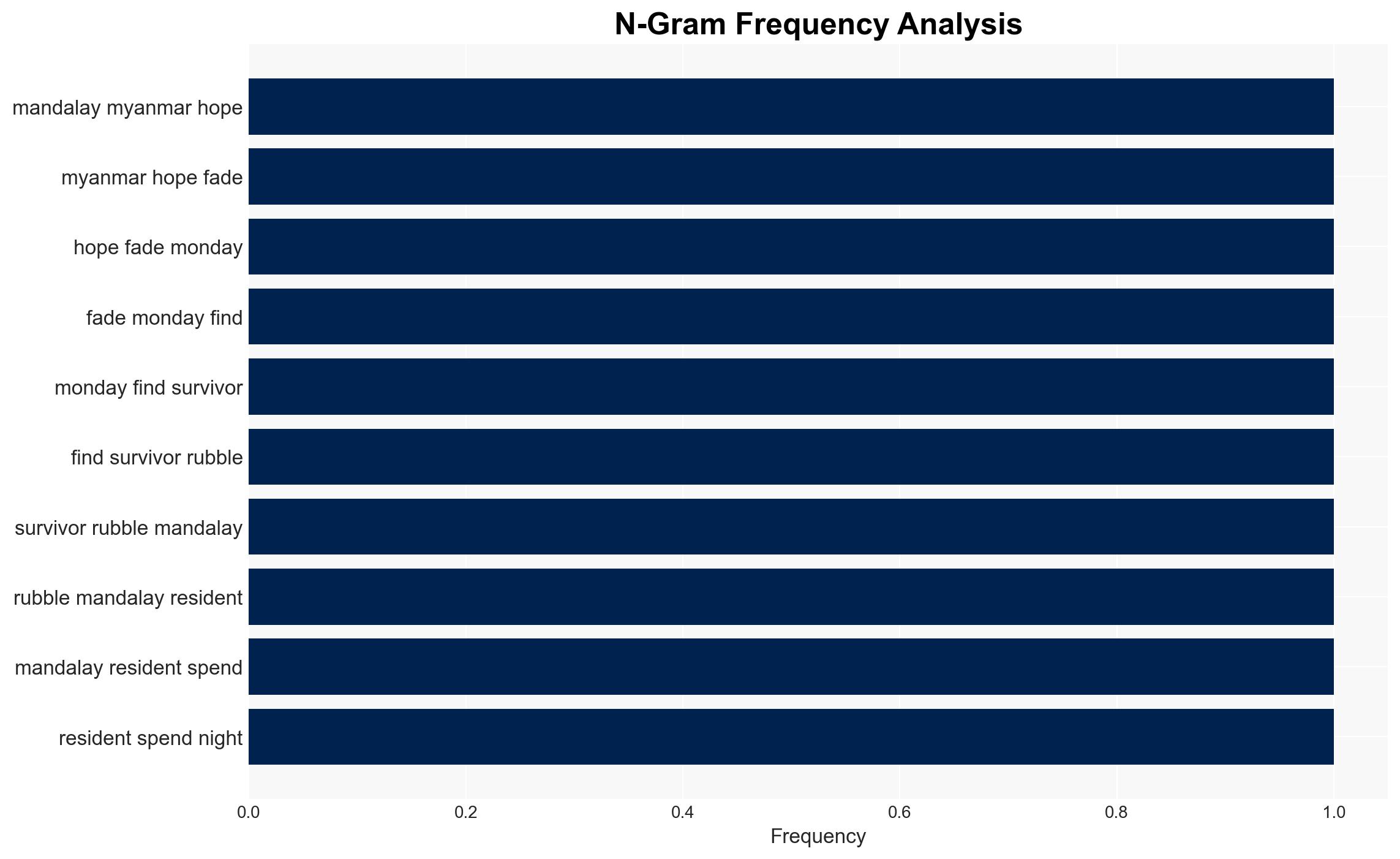Rescue Hopes Fading Three Days After Deadly Myanmar Quake – International Business Times
Published on: 2025-03-31
Intelligence Report: Rescue Hopes Fading Three Days After Deadly Myanmar Quake – International Business Times
1. BLUF (Bottom Line Up Front)
The recent earthquake in Myanmar has resulted in significant casualties and widespread destruction, with rescue efforts hampered by challenging conditions. Immediate international assistance is crucial to support ongoing rescue operations and address the humanitarian crisis. The situation poses risks to regional stability and requires coordinated efforts to mitigate further impacts.
2. Detailed Analysis
The following structured analytic techniques have been applied for this analysis:
General Analysis
The earthquake struck near Mandalay, causing extensive damage and loss of life. Rescue operations are ongoing but are hindered by high temperatures and aftershocks, complicating efforts to locate survivors and manage the deceased. The disaster has exacerbated existing challenges in Myanmar, including political instability and civil unrest. The International Federation of Red Cross and Red Crescent Societies has launched an emergency appeal to aid victims, highlighting the urgent need for resources.
3. Implications and Strategic Risks
The earthquake’s impact extends beyond immediate humanitarian concerns, posing risks to national security and regional stability. The potential for secondary crises, such as disease outbreaks and food shortages, is heightened by the approaching monsoon season. The ongoing civil conflict in Myanmar further complicates relief efforts and increases the risk of violence. Economic interests in the region may also be affected, with infrastructure damage disrupting trade and commerce.
4. Recommendations and Outlook
Recommendations:
- Enhance international cooperation to provide immediate humanitarian aid and logistical support for rescue operations.
- Implement measures to strengthen disaster response capabilities and infrastructure resilience in Myanmar and neighboring regions.
- Encourage diplomatic efforts to address underlying political tensions and promote stability in Myanmar.
Outlook:
Best-case scenario: Effective international aid and cooperation lead to successful rescue operations and stabilization of the affected region, minimizing further humanitarian and economic impacts.
Worst-case scenario: Continued aftershocks and inadequate response exacerbate the crisis, leading to increased casualties, regional instability, and economic disruption.
Most likely scenario: Ongoing challenges in rescue and relief efforts, with gradual stabilization as international aid and local efforts mitigate the immediate impacts.
5. Key Individuals and Entities
The report mentions significant individuals and organizations involved in the response efforts, including rescue workers, medical responders, and the International Federation of Red Cross and Red Crescent Societies. These entities are critical to the ongoing relief operations and strategic planning for future disaster response.




